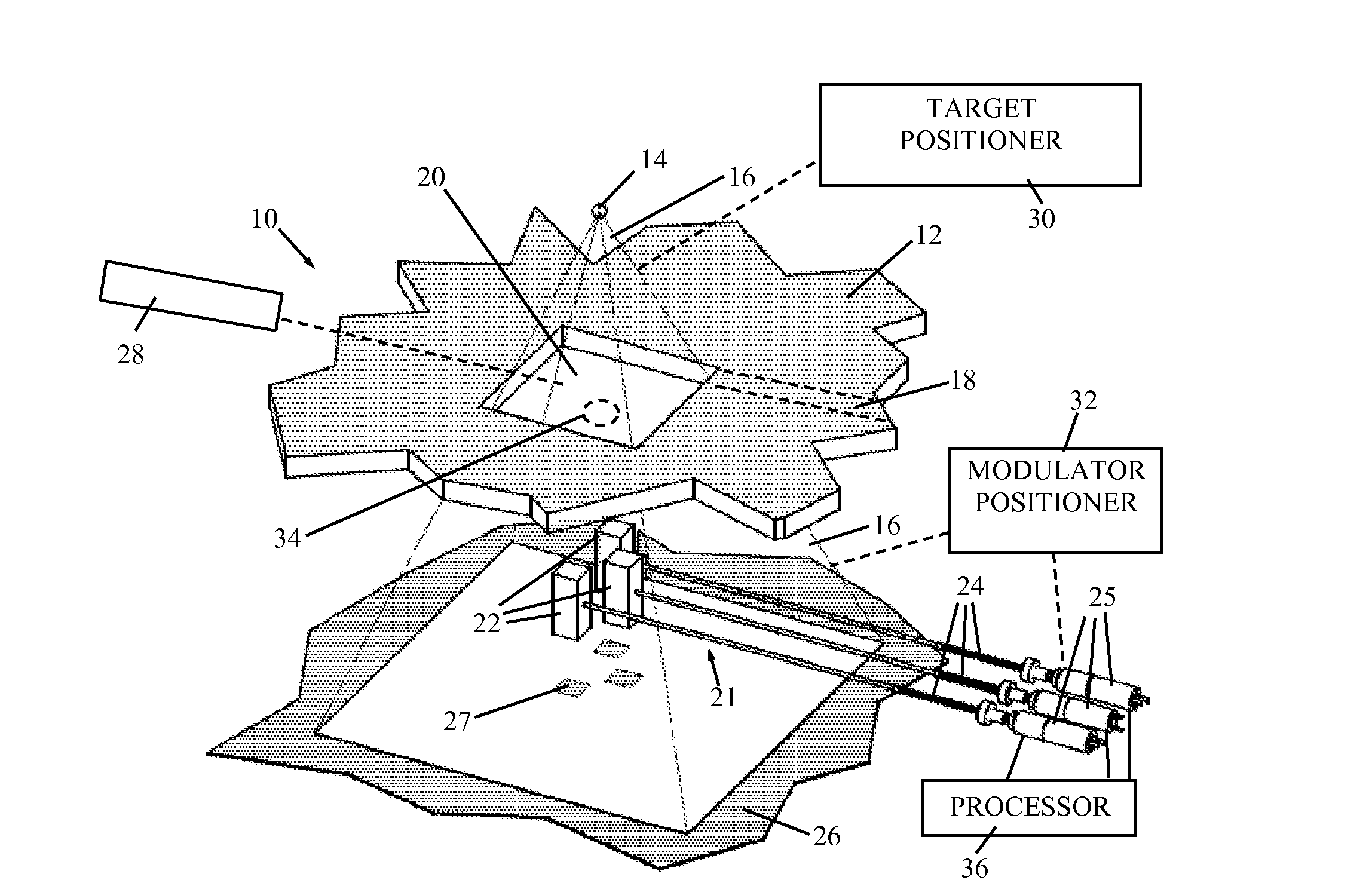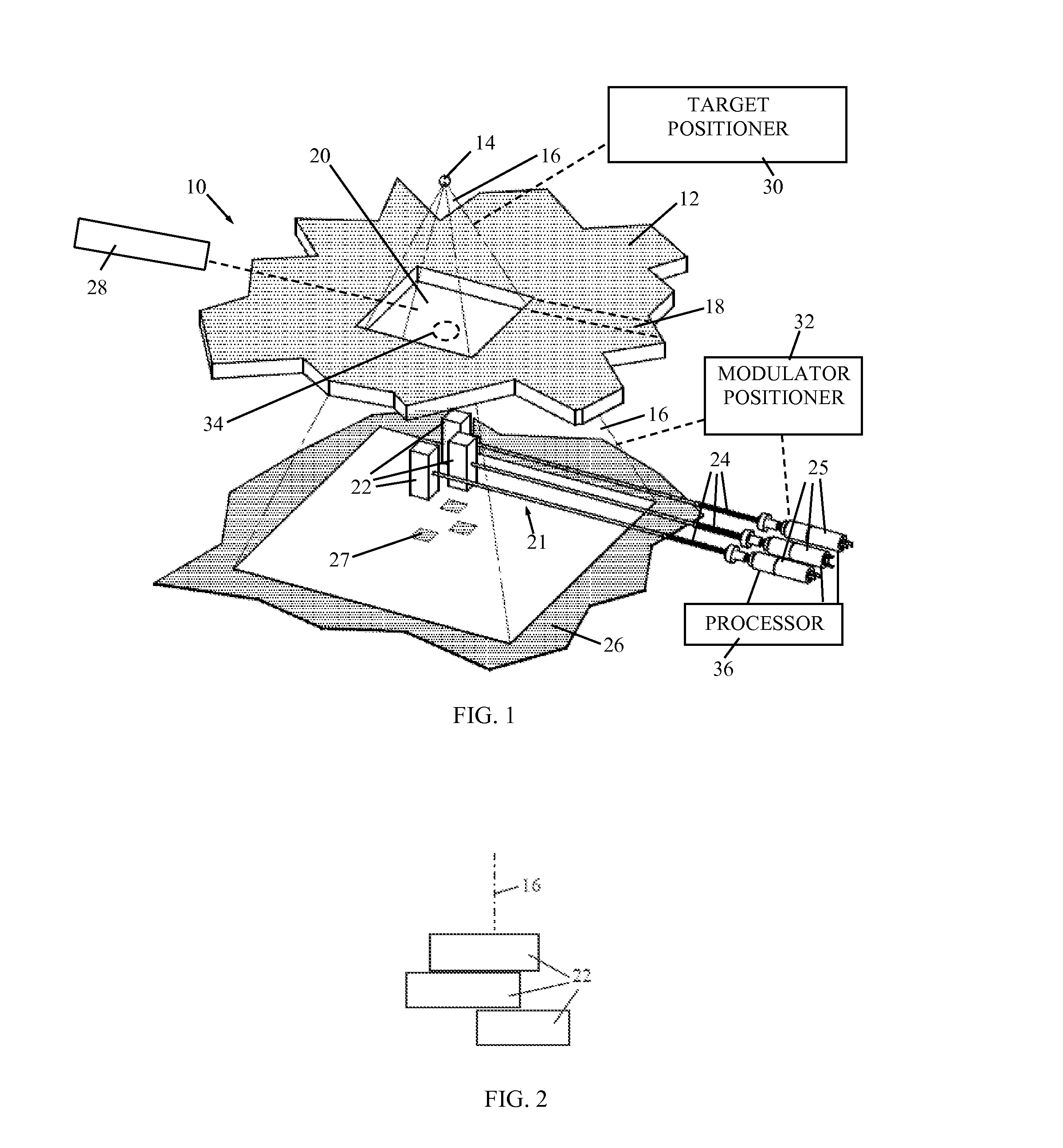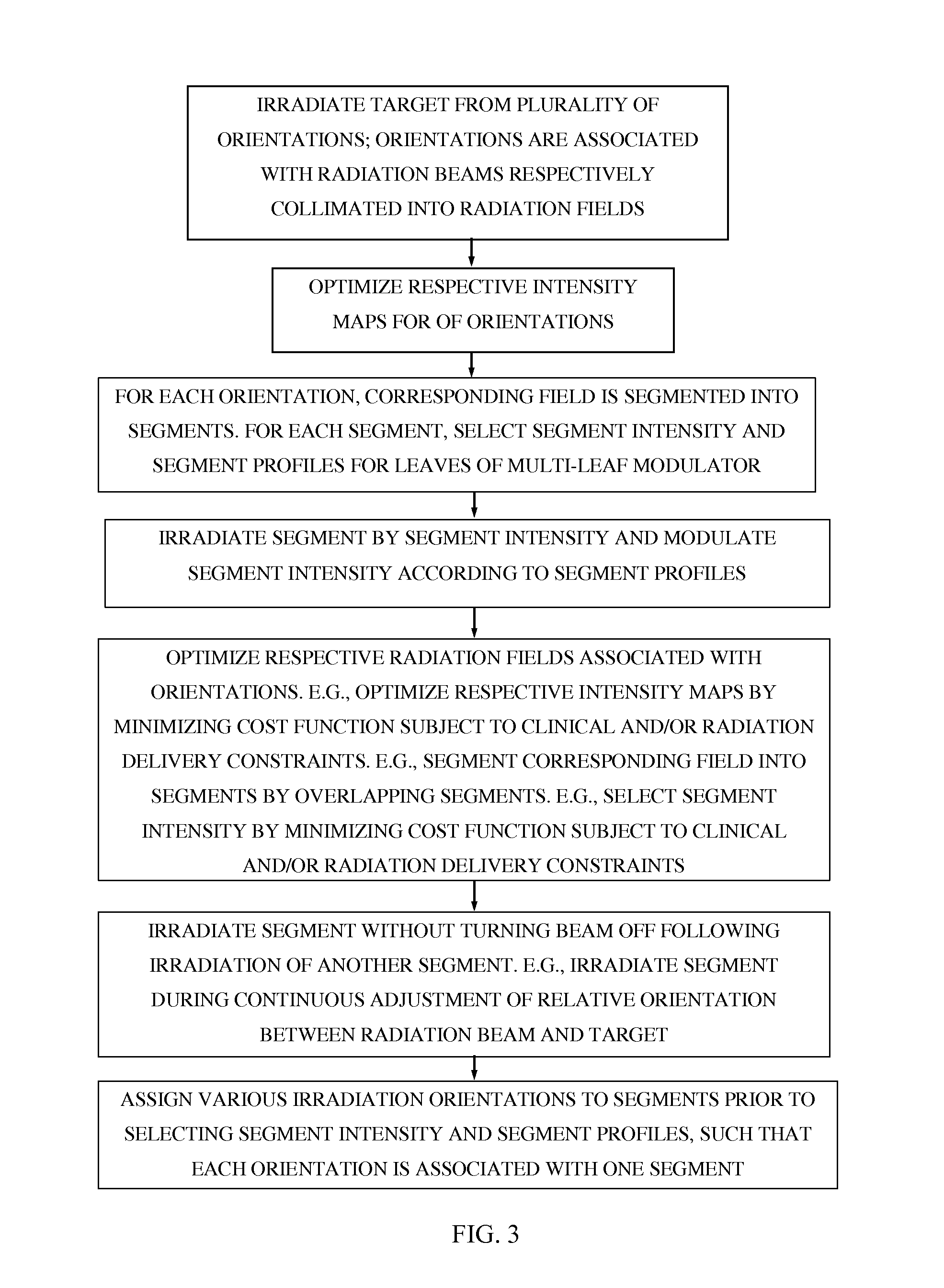Modulating intensity of radiation beam
a radiation beam and intensity technology, applied in the field of radiation therapy and irradiation systems, can solve the problems of simple modulators, insufficient quality of external source radiation therapy, undesirable irradiation of tumorous tissue along with significant volume of oar in the path of radiation beam,
- Summary
- Abstract
- Description
- Claims
- Application Information
AI Technical Summary
Benefits of technology
Problems solved by technology
Method used
Image
Examples
Embodiment Construction
[0026]Reference is now made to FIG. 1, which illustrates a radiation system 10 with a collimator system 12 (or for short, collimator 12), constructed and operative in accordance with a non-limiting embodiment of the present invention.
[0027]In the non-limiting illustrated embodiment, radiation system 10 (e.g., a LINAC) includes a radiation source 14 that emits a radiation beam 16. The radiation source 14 and collimator 12 can be positioned in a gantry (not shown), as is well known in the art. Any radiation may be used, such as but not limited to, electron radiation or photon radiation (gamma radiation). As is known in the art, during treatment, beam 16 is trained on a target typically surrounding the isocenter of the gantry rotation. Imaging apparatus (not shown), such as a fluoroscope or ultrasound apparatus, for example, may be provided for imaging the target irradiated by radiation beam 16. The imaging apparatus may be used in conjunction with a closed loop, feedback control syste...
PUM
 Login to View More
Login to View More Abstract
Description
Claims
Application Information
 Login to View More
Login to View More - R&D
- Intellectual Property
- Life Sciences
- Materials
- Tech Scout
- Unparalleled Data Quality
- Higher Quality Content
- 60% Fewer Hallucinations
Browse by: Latest US Patents, China's latest patents, Technical Efficacy Thesaurus, Application Domain, Technology Topic, Popular Technical Reports.
© 2025 PatSnap. All rights reserved.Legal|Privacy policy|Modern Slavery Act Transparency Statement|Sitemap|About US| Contact US: help@patsnap.com



